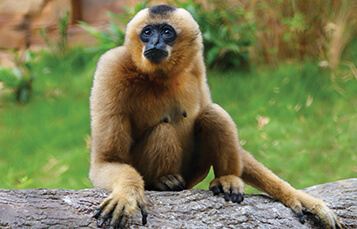From gorillas to gibbons, learn about primates throughout the park.
Visit our gorillas, orangutans, chimpanzees, lemurs and gibbons to learn more about these amazing animals and how you can help our conservation efforts.

From gorillas to gibbons, learn about primates throughout the park.
Visit our gorillas, orangutans, chimpanzees, lemurs and gibbons to learn more about these amazing animals and how you can help our conservation efforts.
Gorillas
Orangutans
Chimpanzees
Lemurs
Wild lemurs are typically found in tropical rainforests and dry thorn brushes throughout Madagascar, but you can watch them play at the Edge of Africa® at Busch Gardens Tampa Bay. A lemur, also known as a prosimian, is an active, tree-dwelling primate whose fur is soft and ranges in color from reddish brown to gray and black!

Gibbons
With over a dozen recognized species of gibbons, these acrobatic mammals make swinging through the rainforest seem graceful. Having hook-shaped hands for grasping branches, powerful legs for propelling and gasping, and being tailless, Gibbons can travel through the jungle at up to 35 miles an hour, bridging gaps as wide as 50 feet with a single swinging leap. Gibbons are considered the most threatened primates on Earth, in fact, many species of gibbon are considered endangered or critically endangered.
Swing over to Jungala to learn more about gibbons.